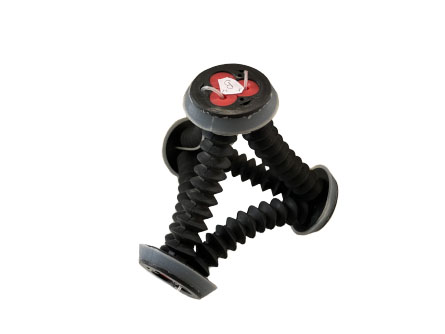| Sep 29, 2023 | |
Transformer! New multi-purpose robot changes shape for different uses |
|
| (Nanowerk News) A team at the University of Bristol and based at the Bristol Robotics Laboratory have built a tetrahedron shaped robot with flexible piping known as Tetraflex that can move through small gaps or over challenging terrain. It can also encapsulate fragile objects such as an egg and transport them safely within its soft body. | |
| The findings, published in IEEE Robotics and Automation Letters ("Tetraflex: A Multigait Soft Robot for Object Transportation in Confined Environments"), show that the Tetraflex robot is capable of locomoting in multiple different ways. This makes the robot potentially useful for mobility in a challenging or confined environments such as navigating rubble to reach survivors of an earthquake, performing oil rig inspections or even exploring other planets. | |
| The object transport capability demonstrated also adds another dimension to potential applications. This could be used to pick up and transport payloads from otherwise inaccessible locations, helping with ecological surveying or in nuclear decommissioning. | |
 |
|
| The Tetraflex robot. (Image: University of Bristol) | |
| Lead author Peter Wharton from Bristol’s School of Engineering Mathematics and Technology explained: “The robot is composed of soft struts connected by rigid nodes. Each strut is formed of an airtight rubber bellow and the length of the strut can be controlled by varying the air pressure within the bellow. | |
| “Higher pressures cause the bellow to extend, and lower pressures cause it to contract. By controlling the pressure in each bellow simultaneously we can control the robot shape and size change. | |
| “After this, it was simply a matter of experimenting with different patterns of shape change that would generate useful motions such as rolling or crawling along a surface.” | |
| Their design uses soft struts which can change length freely and independently. By changing the lengths of the struts by the right amount and in the right sequence, they can generate multiple different ways such as rolling or crawling), change the size of the robot, and even envelop and transport payloads. | |
| Peter said: “I would say these capabilities are a natural consequence of working with such a versatile structure and we hope that other interesting capabilities can be developed in the future. | |
| “The most exciting aspect of this study for me is the versatility of Tetraflex and how we might be able to use these robots to explore challenging terrain and achieve tasks in areas humans cannot access. The multiple gaits available to Tetraflex and object transport capability show this versatility well.” | |
| The team have already enjoyed some success, entering an earlier version of Tetraflex in the RoboSoft 2022 Locomotion Competition in Edinburgh and coming third, demonstrating movement over sand, through small gaps and between obstacles. | |
| After exploring some capabilities of Tetraflex in locomotion and object transport, they now plan to apply machine learning algorithms which could allow them to really thoroughly explore movement patterns, as well as optimising their current ones. | |
| He added: “There could be some really creative and effective ways of moving around or interacting with the environment that we haven’t yet discovered.” |
| Source: University of Bristol (Note: Content may be edited for style and length) |
We curated a list with the (what we think) 10 best robotics and AI podcasts – check them out!
Also check out our Smartworlder section with articles on smart tech, AI and more.

